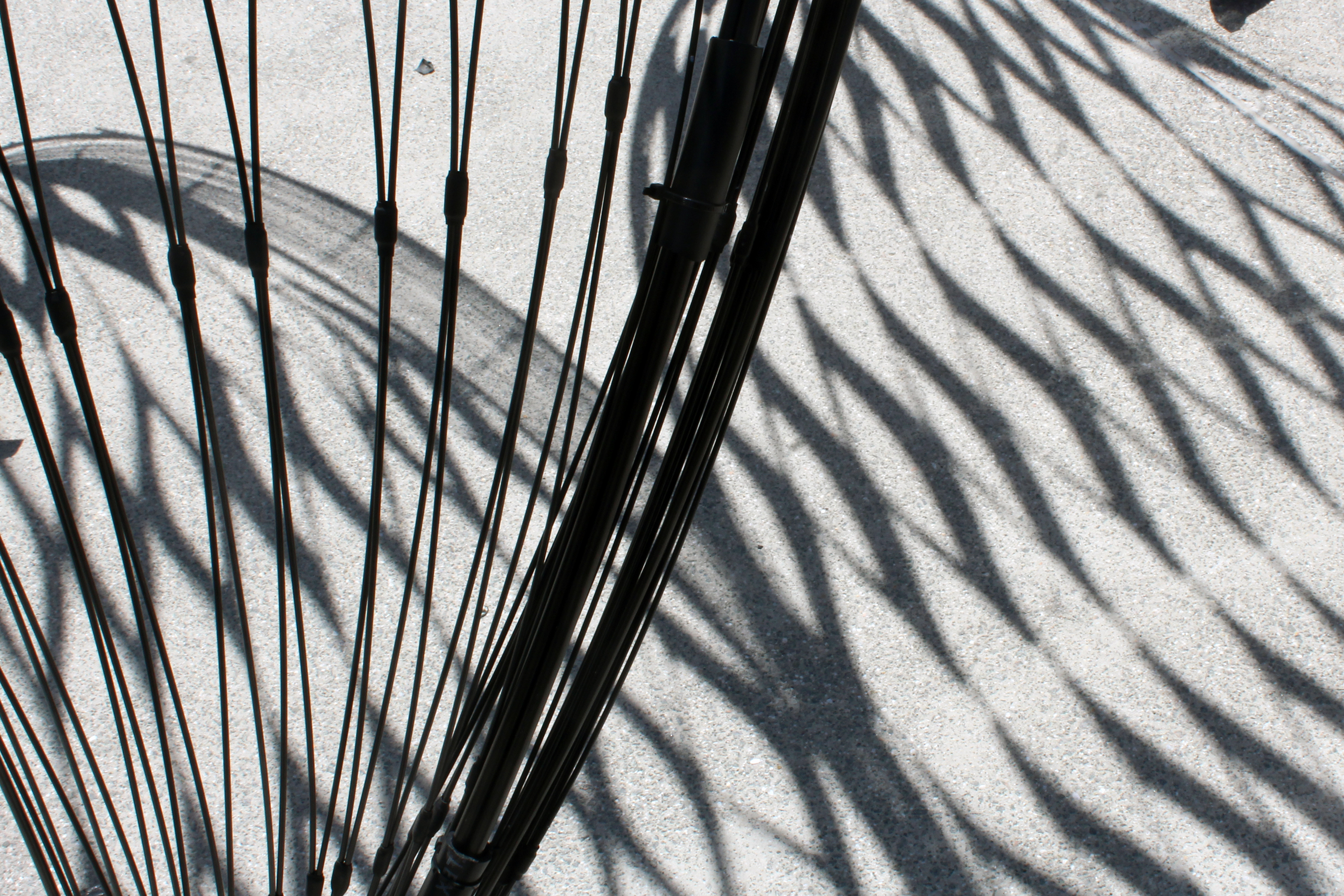Client: University of Technology Sydney
Type: Pavilion
Size / Date: 100 SF / 2016, 200 SF / 2015
Collaboration: University of Technology Sydney (with William Feuerman, Director)

The “Carbon Fiber Workshops” are a series of experimental workshops conducted by MODU and the University of Technology Sydney (with William Feuerman, Director) over a three year period. The workshops explore the idea of a “flexing structure,” which creates structures that react to—rather than resist—the forces of wind. Carbon fiber is used as an advanced structural material. While traditional structural systems are designed to be “hard” enough to resist dynamic wind forces, carbon fiber—with its very high strength to weight ratio—offers the possibility of rethinking the definition of structure and its relationship to weather.
Doppelganger from MODU on Vimeo.

Thus far, the two workshops (2015, 2016) have designed and built lightweight carbon fiber structures. These “flexing structures” move with the wind, their form constantly shifting with the weather. The carbon fiber prompts the exploration of design opportunities that arise from rethinking architecture’s relationship to weather. The structures also create micro-scale public spaces that play host to different kinds of activities in changing weathers.

The “Doppelgänger” structure (2016) created a micro-scale public space that transformed based on individual or collective activities—from an intimate private arrangement to a larger gathering space. “Doppelgänger” was constructed with two structural rings that transformed from a dividing wall to a roof canopy. In its wall form, “Doppelganger” divided the space between two individuals: the structure was lifted to form a small canopy, thus creating a social gathering space.

The inward compression of the structural rings lifted the pavilion to create the gathering space, with an arching canopy enclosure also made of carbon fiber. In reverse, as the two spheres were pulled apart and allowed to expand, the pavilion lowered to the ground, compressing the skin and its substructure to create two separate and distinctly open habitable spaces. As the structure responded to the forces of the wind, the enclosure would expand and contract, allowing “Doppelgänger” to mutate with the changing weather. The structure’s motion was made possible by combining a “flexing structure” with a movable enclosure, which produced an interplay of light that reflected off many small mirrored openings.
The “Whiteout” structure (2015) reacted to the energies of weather and conversation. Whether in response to the wind or to a discussion, the pavilion flexed and changed shape to reflect these shifting energies. “Whiteout” created a micro-scale public space to host discussions. The structural bases on rollers, which also served as moving seats, changed the structure’s appearance at it hosted different kinds of conversations—closer together or further apart. Conversations took place between two or three people, each capable of positioning their own chair in relation to the other(s). The white building wrap (Tyvek) surface was embedded with thousands of fiber rods that allowed the surface to compress and expand; in a similar way, the large carbon fiber arches flexed and stretched with the enclosure.

“Whiteout” is primarily constructed from two materials—carbon fiber and Tyvek. The combination of an advanced structural material with common building wrap creates new opportunities for a “soft structure.” Structural systems are traditionally designed to be “hard” enough to counteract dynamic weather forces. The entire structure flexes and shifts with the wind—not only the structural fabric Tyvek enclosure but also the carbon fiber parabolic arches.
2016 Project Team: MODU: Phu Hoang, Rachely Rotem; UTS: William Feuerman (Director), Dane Voorderhake (Assistant Lecturer) UTS Students: Marty Bowen, Lorri Chan, Lewis Chen, Shahar Cohen, Liam Corr, David De Boos, Rita Fares, Huijie Gu, Isobel Hall, Alice He, Adam Hoh, Aliaa Issa, Erik Jorgensen, Pareena Lertsurawat, Minchao Liu, Rachael O’Toole, Wanqing Zhao, Michael Zhi Teoh, Jeffrey Tighe, Anderson Trieu, Gabrielle Veringa, Lauren Watson
2016 Credits: Michael Richards (Materials Consultant), Daisy Zheng (Photography), Abdul Moeez (Photography)
2015 Project Team: MODU: Phu Hoang, Rachely Rotem; UTS: William Feuerman (Director), Endriana Adisho (Assistant Lecturer) UTS Students: Michelle Beck, Natasha Bonney, Zoey Chen, Tran Tuan Anh Dang, Prudence Duncan, Zoe Horn, Altaf Khan, Connor Mackenzie, Jake Paraskaeva, James Quinn, Shaun Ramodien, Jean-Claude Saliba, Raymond Shalala, Oliver Solente, Michael Stewart, Jeffrey Tighe, Jessica Tse, Michelle Vassiliou, Dane Voorderhake
2015 Credits: Michael Richards (Materials Consultant), Oly Begg (Photography)
